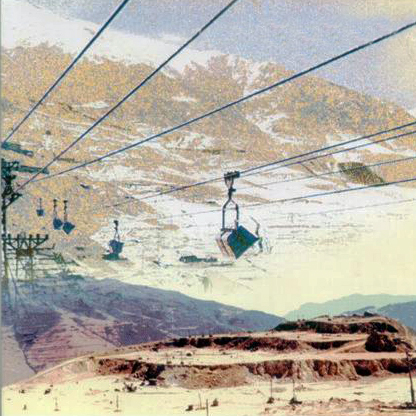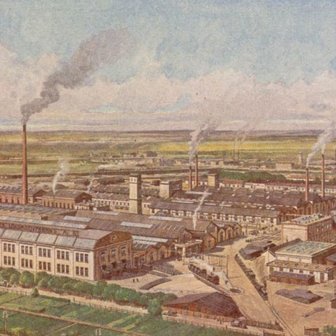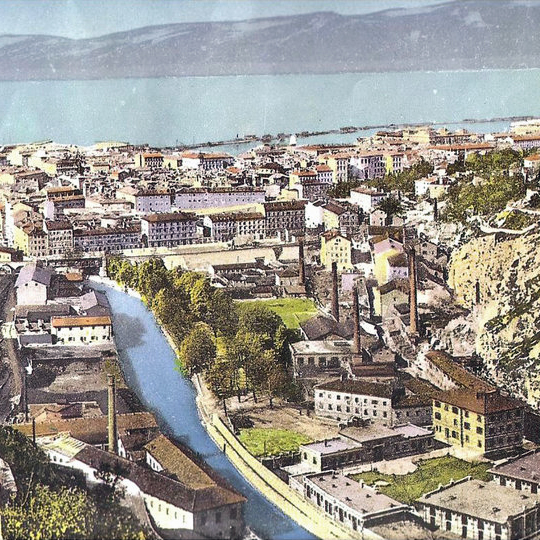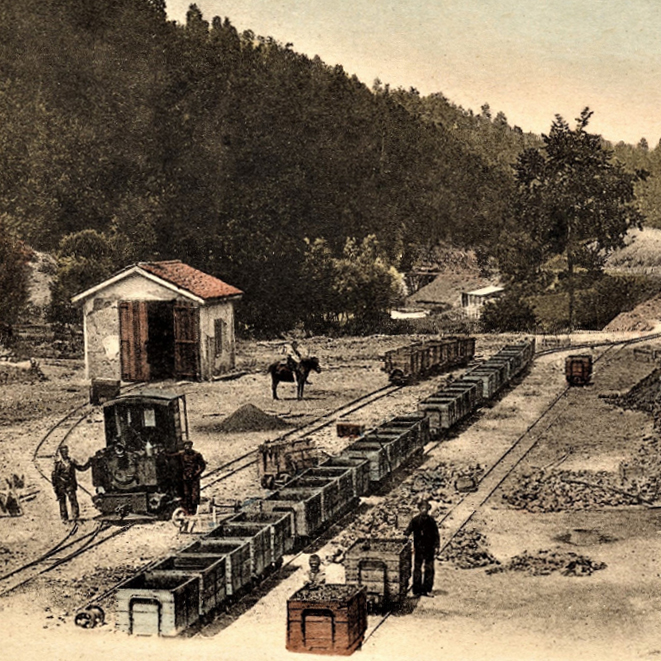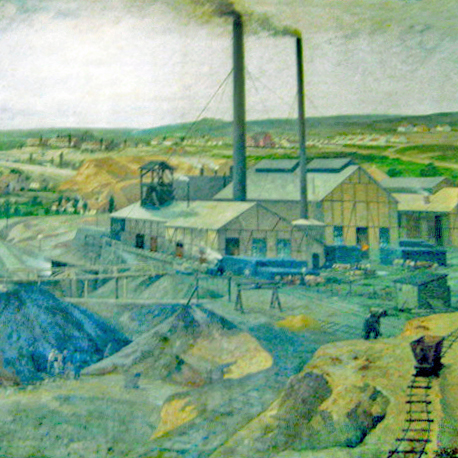INDUSTRIAL HISTORY OF EUROPEAN COUNTRIES
ALBANIA
Albania’s economic history is characterised by a fundamental contradiction: the country has valuable natural resources, fertile soil and enormous hydroelectric potential ...
more
ANDORRA
The Principality of Andorra boasts a unique economic history. On account of its inaccessible location high in the Pyrenees, far from any trade routes with only a limited amount of farmland ...
more
ARMENIA
Civilisation in Armenia is thousands of years old, but the high mountains and deep valleys of the Lesser Caucasus are a major obstacle to economic development.
more
AUSTRIA
On the one hand, Austria possessed all the prerequisites for industrialisation: plentiful natural resources, particularly iron ore and salt, and a long mining tradition.
more
AZERBAIJAN
The industrial history of Azerbaijan is largely a history of oil. Iron, copper and other ores also lie in the country's soil, but mining remained comparatively modest. Agriculture dominated ...
more
BELARUS
Belarus has few natural resources and in particular lacks coal and iron ore, the basic ingredients of the classic heavy industries. Only potash, used in making fertilisers and in glass manufacture ...
more
BELGIUM
The industrial age of the European continent began in Belgium, where conditions were similarly good to those in England: coal had been mined in the valleys of the Meuse ...
more
BOSNIA&HERZEGOVINA
Although Bosnia-Herzegovina is a land of fertile fields and significant natural resources, its industrial development did not commence until very late. As in other countries ...
more
BULGARIA
Dramatic political upheavals defined Bulgaria’s economic history and for many years impeted the path to industrialisation. Although a textile factory was founded in Sliven ...
more
CROATIA
For centuries, Croatia was squeezed between the expansionist Ottoman Empire in the southern Balkans, the Habsburg Empire in the north and the Kingdom of Hungary to the east.
more
CYPRUS
Copper is Cyprus’s only major natural resource – but it was once so plentiful that it secured the island’s fame and wealth for millennia. Copper was the first metal that humans used ...
more
CZECH REPUBLIC
In many respects, the industrialisation of today’s Czech Republic, the historic Habsburg dominions of Bohemia and Moravia along with part of Silesia, followed a typical ...
more
DENMARK
Not many nations have succeeded in managing the transition to industrialisation as an agrarian society. Most of the European countries, which continued to depend on farming ...
more
ESTONIA
After the Russian Czars assimilated Estonia into their empire in 1710, the first manufactories gradually emerged, such as the saw mill in Räpina, glass works at Põltsama ...
more
FINLAND
Finland’s rise as a prosperous industrial nation is due primarily to two very different factors: its extensive forests and its historically close relationship with Russia.
more
FRANCE
The industrialisation of France began late and proceeded so hesitantly that one cannot speak of an "industrial revolution". The soils of the "Grande Nation" do not contain ...
more
GEORGIA
Bordering the peaks of the Caucasus to the north, the Black Sea to the west and the Caspian Sea to the east, Georgia has been a hub of exchange between the four corners of the sky ...
more
GERMANY
The first German textile factory was built in 1784 in Ratingen near Düsseldorf. It was called "Cromford" after its English model and was very much on its own in Germany.
more
GREECE
Regardless of whether we compare it with western or eastern Europe, the history of industry in Greece remains a special case. The initial conditions were unfavourable ...
more
HUNGARY
For a long time, Hungary’s economy was dominated by foreign powers, starting with Ottoman rule in the 16th century. Development thus followed a painful, inefficient up-and-down course.
more
ICELAND
For a long time, this volcanic island was one of Europe’s poorest countries, as only a small portion of the land is suitable for agricultural use and Iceland possesses virtually no natural ...
more
IRELAND
Ireland is today widely known as the “Emerald Isle”, but this successful branding hides a bitter history: until well into the 20th century, unprofitable agriculture predominated on the island.
more
ITALY
Italy’s lack of natural resources and long history of fragmentation were its greatest obstacles on the road to industrialisation. The disparity between North and South only became acute ...
more
KAZAKHSTAN
Kazakhstan came under Russian rule around the middle of the 18th century and then served primarily as a supplier of raw materials and a sales market for the first plants of Russian industry.
more
KOSOVO
The country has plains of fertile farmland and rich deposits of ores and lignite, but it has never managed to get sustainable development off the ground. The smallest state ...
more
LATVIA
Latvia’s industrialisation was quite similar to Estonia’s: in the 19th century, both countries were under the rule of the Russian czars, and both lacked classical raw materials ...
more
LIECHTENSTEIN
For centuries, this tiny Alpine country, founded in 1719, was considered the poor house of Europe: situated in the Rhine valley between Austria and Switzerland ...
more
LITHUANIA
All three Baltic nations lack deposits of raw materials, but Lithuania remained an agricultural country the longest. Since 1795, when the Russian Czars annexed it into their empire ...
more
LUXEMBOURG
Who would have thought that this small country in the heart of Europe was once one of the largest iron producers in the world? Whereas the north of Luxemburg is mostly agricultural ...
more
MALTA
Malta and its surrounding islands have very little in the way of natural resources. Only the limestone is suitable for making cement. Additionally, the forests were ...
more
MOLDOVA
The fertile black soil is the country's only significant resource; the few mineral resources worth mentioning are limestone and gypsum, which can be used for the production of ...
more
MONACO
No industry of note developed in Europe's second smallest state, but the 1860s saw a pioneering economic revival. In 1861, the now legendary casino was opened ...
more
MONTENEGRO
A tiny country dominated by craggy mountains and deep gorges, with next to no arable land, cut off from the sea for centuries: Montenegro had extremely poor prerequisites ...
more
NETHERLANDS
Industrialisation came late: on the one hand, because the Netherlands had only small deposits of the key raw materials coal and iron ore, and on the other, because the "Golden Age" ...
more
NORTH MACEDONIA
North Macedonia attained independence very late compared to other European nations – and thus industrialisation was late and slow in coming as well.
more
NORWAY
Today, the "Land of Fjords" is one of the richest nations on earth, but until well into the 19th century it was a poor agricultural country, hardly developed because of its rugged mountains ...
more
POLAND
Industrialisation within the territory of today’s Poland was extremely disparate as repeated partitioning of this nation occurred during the decisive 150 years in which ...
more
PORTUGAL
For a long time, Portugal was isolated within Europe, due both to its location on the western fringe of the continent and to policies that focused more on exploiting resource-rich colonies ...
more
ROMANIA
Romania’s economic history was shaped by the tensions between its extremely passionate striving toward self-sufficiency and the dominance of foreign powers.
more
RUSSIA
Although the European part of the Russian Empire was rich in raw materials its industrialisation started late, due mainly to the lack of labour and capital caused by centuries ...
more
SAN MARINO
The city-state has no industrial history. For centuries, the most important commercial activity was the quarrying of sandstone on Monte Titano, on which the city is located.
more
SERBIA
When Serbia gained independence in 1878 after over 400 years of Ottoman rule, the chances of industrialisation were poor. Investment capital was unavailable, as farmers ...
more
SLOVAKIA
Though Slovakia has a long mining tradition, it remained an agricultural nation until well into the 20th century. The late Middle Ages was the golden age of Slovakian mining.
more
SLOVENIA
Slovenia was considered a part of the agricultural periphery of the Habsburg Empire for centuries. However, wherever economic potential became apparent between ...
more
SPAIN
Industrialisation in Spain varied geographically. Three regions were the pioneers: Basque Country, Asturias and Catalonia. In the Basque Country, the iron industry was concentrated.
more
SWEDEN
Sweden’s long road to becoming an industrial nation followed a common path, in that the process began with agricultural surpluses and a consequent population growth.
more
SWITZERLAND
On the face of it, the prerequisites were lacking: Switzerland is almost entirely devoid of the classical raw materials of coal and iron, and the mountainous terrain makes agriculture ...
more
TURKEY
By the beginning of the 20th century, the once-glorious Ottoman Empire had deteriorated for all practical purposes into an agricultural colony of the West. Due to its crushing foreign debt ...
more
UKRAINE
The individual regions of the Ukraine differed greatly in their development because natural resources are unevenly distributed and because for centuries the territory ...
more
UNITED KINGDOM
The Industrial Revolution began in the fields of British farmers. Thanks to new cultivation methods, they were able to increase their yields in the 18th century so that the country's food ...
more
VATICAN CITY
The smallest state in the world has no industry and must be supplied with virtually all necessities, including electricity, gas and water, from outside.
more




